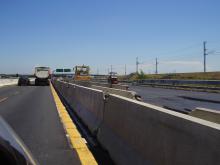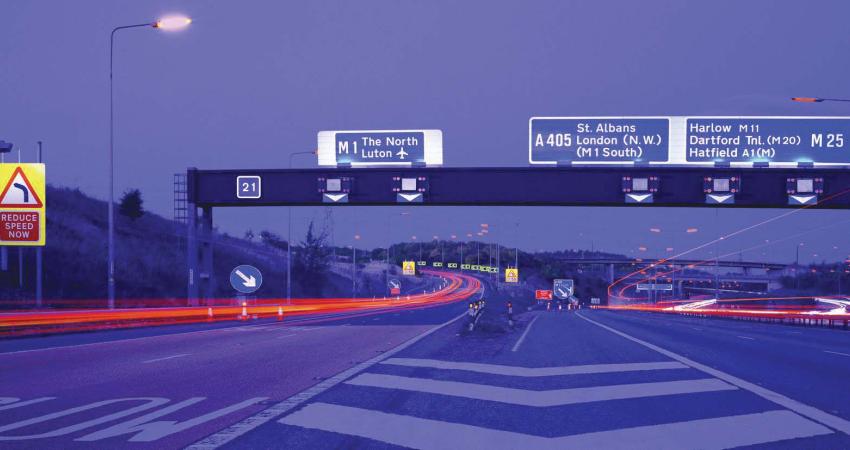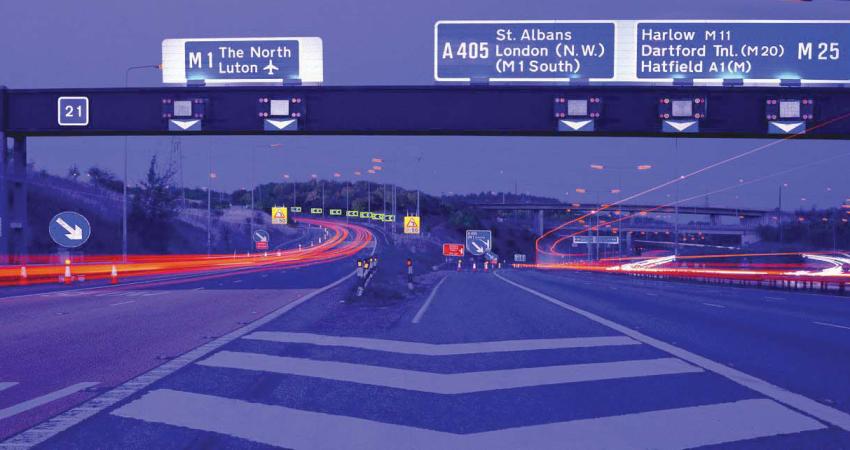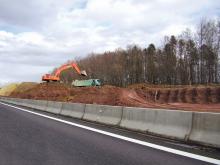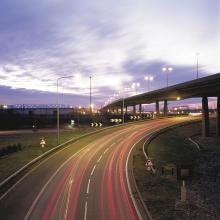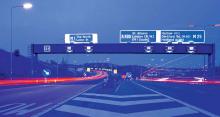On 5 March 2014, the Polish Road Congress organised a consultation seminar on road markings standards across the EU
The conference followed the publication of the latest proposal by the ERF for an EU-wide intervention and maintenance policy for road markings, commonly known as 150x150. The proposed policy illustrates the ERF’s view that road markings should have a minimum width of 150mm for all roads, and their performance should not be allowed to drop below 150mcd/lux/m² (R3) in dry weather conditions a
On 5 March 2014, the Polish Road Congress organised a consultation seminar on road markings standards across the EU
The conference followed the publication of the latest proposal by the7575 ERF for an 3287 EU-wide intervention and maintenance policy for road markings, commonly known as 150x150. The proposed policy illustrates the ERF’s view that road markings should have a minimum width of 150mm for all roads, and their performance should not be allowed to drop below 150mcd/lux/m² (R3) in dry weather conditions and 35mcd/lux/m² (RW2) in wet and rainy conditions.
To arrive at this proposal, which is outlined in the latest ERF publication ‘Marking the way towards a safer future’, the ERF and its members based themselves on empirical evidence, results of previous and ongoing research projects and also examined current national regulations for road markings in a number of EU Member States.
Despite the fact that road markings represent one of the most cost-effective solutions for road authorities, the markings on many of Europe’s roads are starting to deteriorate at an alarming rate. This not only represents a safety hazard in itself, it also neglects the growing visual needs of older drivers and negates the potential safety benefits emanating from the introduction of lane-departure warning systems.
As Europe’s population is ageing, it is expected that approximately 25% of the continent’s citizens will be above 65 by 2020. As a general rule, drivers over 60 tend to display lower reaction times compared to their younger counterparts as a result of a gradual loss of visual accuracy, difficulty in close vision, changes in colour perception, and, in some cases, problems seeing in low light or night-time conditions. In this context, and as also demonstrated by the EC-funded RAINVISION project, the presence of wet-night visible markings on the road can significantly increase the sense of driver comfort for older drivers, thus reducing the risk of them being involved in an accident.
Moreover, by warning distracted drivers, lane departure warning systems can play an important role in preventing either run-off accidents or head-on collisions on single carriageways where often there is no separation between opposite traffic lanes. The effective operation of lane departure warning systems requires, however, the presence of a well-maintained marking that is visible under all weather conditions.
In outlining the ERF proposal for an intervention and maintenance policy for road markings before an audience of approximately 70 people, Konstandinos Diamandouros highlighted the arguments above but also underlined the cooperation that ERF had initiated with1200 EuroRAP and 6181 ACEA in order to better understand the operational requirements of lane departure warning systems.
While everyone welcomed the opportunity the ERF paper presented for launching a debate of the quality of road markings on Polish roads, reactions to the proposal from the participants were mixed.
“With respect to highways and A-class roads, there seems to be a broad consensus that the 150x150 proposal is the right solution. This is something that is already being implemented in many countries and in fact, the national requirements in Poland are very close to what we are proposing,” explained Konstandinos Diamandouros, who as secretary of the ERF Working Group on Road Markings, has been at the forefront of the current proposal.
“The problem mainly lies in the secondary network,” continued Diamandouros. “Local road authorities in Poland have unfortunately not been spared from the budget cuts that have affected most European countries. While many local administrations would like to improve the quality of their road markings on their network, the severe budget cuts of the past years leave them with few options. This is a shame because this is where most accidents happen and where the presence of good infrastructure is most needed.”
To highlight the urgent need for more stable financing of Europe’s road network, ERF launched last year a Manifesto entitled ‘Keep Europe Moving: A Manifesto for a long-term effective management of a safe and efficient European road network’.
“We will continue pushing in this direction and in the following months we plan to launch a position paper on Road Asset Management which we would like to present to the European Parliament, once the European elections have taken place in May" explained Christophe Nicodème, ERF Director General.
The %$Linker:2 External <?xml version="1.0" encoding="utf-16"?><dictionary /> 0 0 0 oLinkExternal ERF Paper on Road Markings http://www.erf.be/images/ERF_Paper_on_Road_Markings_Released.pdf false http://www.erf.be/images/ERF_Paper_on_Road_Markings_Released.pdf false false %>is available in English, French, German, Italian and Czech
The ERF Manifesto on Road Asset Management is %$Linker:2 External <?xml version="1.0" encoding="utf-16"?><dictionary /> 0 0 0 oLinkExternal available here http://www.erf.be/images/stories/Road_Asset_Management/Screen-ERF.pdf false http://www.erf.be/images/stories/Road_Asset_Management/Screen-ERF.pdf false false %>
The conference followed the publication of the latest proposal by the
To arrive at this proposal, which is outlined in the latest ERF publication ‘Marking the way towards a safer future’, the ERF and its members based themselves on empirical evidence, results of previous and ongoing research projects and also examined current national regulations for road markings in a number of EU Member States.
Despite the fact that road markings represent one of the most cost-effective solutions for road authorities, the markings on many of Europe’s roads are starting to deteriorate at an alarming rate. This not only represents a safety hazard in itself, it also neglects the growing visual needs of older drivers and negates the potential safety benefits emanating from the introduction of lane-departure warning systems.
As Europe’s population is ageing, it is expected that approximately 25% of the continent’s citizens will be above 65 by 2020. As a general rule, drivers over 60 tend to display lower reaction times compared to their younger counterparts as a result of a gradual loss of visual accuracy, difficulty in close vision, changes in colour perception, and, in some cases, problems seeing in low light or night-time conditions. In this context, and as also demonstrated by the EC-funded RAINVISION project, the presence of wet-night visible markings on the road can significantly increase the sense of driver comfort for older drivers, thus reducing the risk of them being involved in an accident.
Moreover, by warning distracted drivers, lane departure warning systems can play an important role in preventing either run-off accidents or head-on collisions on single carriageways where often there is no separation between opposite traffic lanes. The effective operation of lane departure warning systems requires, however, the presence of a well-maintained marking that is visible under all weather conditions.
In outlining the ERF proposal for an intervention and maintenance policy for road markings before an audience of approximately 70 people, Konstandinos Diamandouros highlighted the arguments above but also underlined the cooperation that ERF had initiated with
While everyone welcomed the opportunity the ERF paper presented for launching a debate of the quality of road markings on Polish roads, reactions to the proposal from the participants were mixed.
“With respect to highways and A-class roads, there seems to be a broad consensus that the 150x150 proposal is the right solution. This is something that is already being implemented in many countries and in fact, the national requirements in Poland are very close to what we are proposing,” explained Konstandinos Diamandouros, who as secretary of the ERF Working Group on Road Markings, has been at the forefront of the current proposal.
“The problem mainly lies in the secondary network,” continued Diamandouros. “Local road authorities in Poland have unfortunately not been spared from the budget cuts that have affected most European countries. While many local administrations would like to improve the quality of their road markings on their network, the severe budget cuts of the past years leave them with few options. This is a shame because this is where most accidents happen and where the presence of good infrastructure is most needed.”
To highlight the urgent need for more stable financing of Europe’s road network, ERF launched last year a Manifesto entitled ‘Keep Europe Moving: A Manifesto for a long-term effective management of a safe and efficient European road network’.
“We will continue pushing in this direction and in the following months we plan to launch a position paper on Road Asset Management which we would like to present to the European Parliament, once the European elections have taken place in May" explained Christophe Nicodème, ERF Director General.
The %$Linker:
The ERF Manifesto on Road Asset Management is %$Linker:

